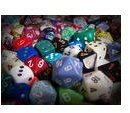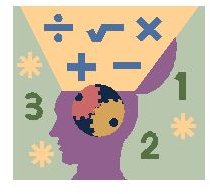Games Parents Can Use to Reinforce Basic Addition and Subtraction Facts for Third Grade Students
Learning addition and subtraction facts can be tedious for children but it is still a necessary skill to learn. Despite the accessibility of calculators and computers there may be a time when the student needs to use his own always-available computer—the brain!
To make the memorization less of a struggle between you and your child try to make the practice fun and relevant. Here are some great ideas to help you.
Hit the Target!
Play this with your child or have two children work together to hit the target number exactly.
Addition:
Choose a target number and write it at the top of a piece of paper. Start the game at zero. The first player adds any number from one to five to the zero. The next player adds to that sum any number from one to five. Each player takes turns adding to the sum until one player reaches the target number exactly. As you get closer to the target number, strategy is necessary to prevent your opponent from reaching the number first.
Subtraction:
The same premise is involved except the players will begin at the target number and subtract a number from one to five. Continue back and forth until a player reaches zero exactly.
Variation:
Expand the choices of what numbers can be added or subtracted. For example you may use any number from one to seven or one to nine.
Roll the Dice!
Use the common version of dice with six sides.

Provide a piece of paper and pen to keep track of the scores.
1. With two people playing, each person has one cube to roll. Both players roll the dice at the same time. Whoever calls out the correct sum earns a point. Before the game begins, set a specific number of points to reach to become a winner.
2. Variation: Use dice with larger numbers which are available at toy stores, educational supply stores or online.
Card Shark
Remember the game of war using a deck of cards? Two players have an equal number of cards and each player turns a card face up. This time, the first player to add or subtract (whichever operation you are doing) correctly gets to keep the two cards. The player who finally obtains all of the cards wins. For a shorter game, set a timer and the player with the most cards when the timer rings wins. Remember to assign values to the face cards before the game begins or you may choose to remove them from the deck.
Drive it Home
Busy families are often in the car driving from one place to another. You can use this time to work on addition or subtraction facts. Here’s how. The driver chooses a number. Let’s say it is seven. Then the driver calls out another number. Let’s say the number is four. The student needs to mentally add four to seven. Keep calling out numbers as quickly as possible as the student adds each number with seven. This will build up mental math ability. Use the same process for subtraction.
Life Is a Story Problem
It’s easy to blend math into everyday situations because, after all, life is a story problem! Let’s say you are setting a table and you have three forks. How many more will you need for everyone to have a fork? The recipe calls for two eggs. How many would you need if you double the recipe? Count necessary supplies (cups, plates, silverware,etc.) for a party you might be having. How much more will you need? Take every opportunity to turn a situation into a chance for a child to exercise his/her brain! It also distracts them from the chore you are getting them to do.
Traditional Tools
Flashcards
Buy or make some flash cards with math facts. Set a timer and see how many your child can answer in a given time. Keep a chart for the progress and decide on a fun reward when a predetermined goal is met.
Worksheets/Workbooks
Make or buy math worksheets for your child to use. This also gives the child practice in writing legible numbers so that the work is corrected properly.
No matter how your third graders practice basic addition and subtraction facts, make it fun, be consistent with practicing and be a good role model for learning.
Resources
Online Practice:
IXL is a website that is all about math. There is a list of state standards and more importantly the site has practice activities for every grade level from Pre-K through 8th grade. The user can click on specific skills to practice or practice skills across a particular grade level.
Software:
Super Kids Educational Software Review is a wonderful site to find appropriate software for your child’s educational needs.
